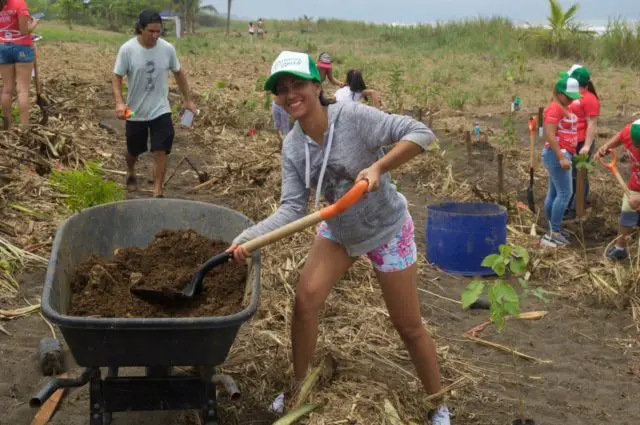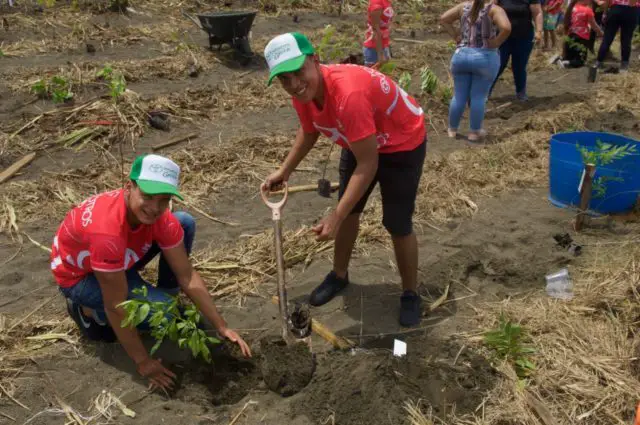In recent times, deforestation linked to the logging and burning of trees has produced an abrupt change in our ecosystem, caused by human action. This process has been due to the destruction of forest areas. The phenomenon occurs in most cases, due to the bad actions that people make directly on nature, and where major industries are the main culprits.
The economic activities that have the most negative impact are the logging and rice sowing industry, as well as the use of new soils in agriculture, livestock, and mining.
The indiscriminate cutting down of trees can cause a very serious damage to many types of habitats. The most unfavorable consequences of this practice are the partial or total loss of biodiversity.
This element, that is to say, the indiscriminate slashing of trees has a total adverse impact on the fixation of carbon dioxide (CO2).
Many of the industries that benefit from this practice obtain exorbitant profits, but they forget about the soil that allows them to obtain this profit, creating an irremediable damage to our ecosystem. While in most countries of the world, large-scale designs and Apps to reduce carbon emissions are created, Costa Rica has a simple but effective plan: to plant trees, thousands of trees, millions of trees.
Planting a tree is so important in the culture of the Ticos, that the main authorities of the country take this into account for their 2021 estimate of 3/4 of the CO2 emissions being absorbed by the forestry and agroforestry sector. In that year, the nation seeks to obtain the “Neutral Carbon” category. This means that the amount of CO2 obtained from the atmosphere will be equivalent to that produced on the ground.
In relation to this, one of the projects that most stands out in Costa Rica is the planting of more than 35,000 trees in different areas with deforested soils, carried out by the project executed by Federico Gutiérrez. The team of The Costa Rica News (TCRN) had a very interesting conversation with Gutiérrez, who explained to us important aspects about his plan.

He explained that there have been 2 major challenges, linked to the ecological and economic areas for this project to go ahead. The biggest obstacle has been in the ecological field as to selecting the most adequate sites where the trees are to be planted and the biological behavior and adaptation of these species to the sands of the Costa Rica coastline where most of the trees are planted.
On the other hand, the second challenge that they had to face, responds to the achievement of financial sustainability to maintain the growth of the project and its development, since this is a non-profit enterprise.
When asked about what benefits this initiative will bring to the planet, he was emphatic to mention the 3 main fields of the impact that was to be managed.
“On the one hand we have a very strong environmental commitment, since we are restoring an area that was impacted by human activity, mainly by the rice and livestock agro-industries, and we are trying to restore the forests that existed there before, using species that are 100% native of each place chosen for the project. For example, in this way, we generated a quite strong impact to the “Playa Hermosa” site. The macaws and monkeys returned to Playa Hermosa; the turtles have shades for laying their eggs; we have nests of squirrels and birds that are embellishing the main assets of tourist areas of Costa Rica”, Gutiérrez explained.
Economic factor
“We are achieving an area that previously did not offer any type of attraction and today is a jewel for visitors, adding value to the locality. Nowadays, due to this project, there is access to very nice shades for families and tourists alike to enjoy, allowing an increase in the economic activity in this previously forgotten location”, he said.
Social implications
This project involves the whole community, with the schools being the main protagonists, thus this way by incorporating and motivating the youth. “We bring seeds to the public and private schools thus promoting to the youngest citizens the passion for preserving the environment. Children truly understand the importance of caring for the environment that surrounds them, in many of these cases other organizations, such as firefighters and the Red Cross, join this initiative. Recently, the staffs of private companies of San José have also joined in”, he added.

Origins of the project
Federico Gutiérrez is proud to state that this initiative was born in 2009, when the 1st wildlife refuge was created, which was located in Playa Hermosa Punta Mala. In 2011, the 2nd project came about, located in Giones beach, and then the 3rd project, that has recently begun, in Jacob beach and Esterillo beach.
Costa Rica breaks records by planting trees
For Gutiérrez and his entire team, it is an honor to be establishing conservational records at the national and international level with, for example, planting 3,000 trees in a single day with more than 200 volunteers intervening in this great project.
He gives recognition to the private companies like Choco Frutas, Marriot, CPG, Fifco, and Cerveza Imperial that have assigned their social volunteering to this cause.
Finally, Gutiérrez gives a strong message to all the Ticos to continue with this passion for safeguarding the environment. Likewise, he invites them to always leave a positive mark in the country. That is, making the nation even better than what they have achieved so far.
